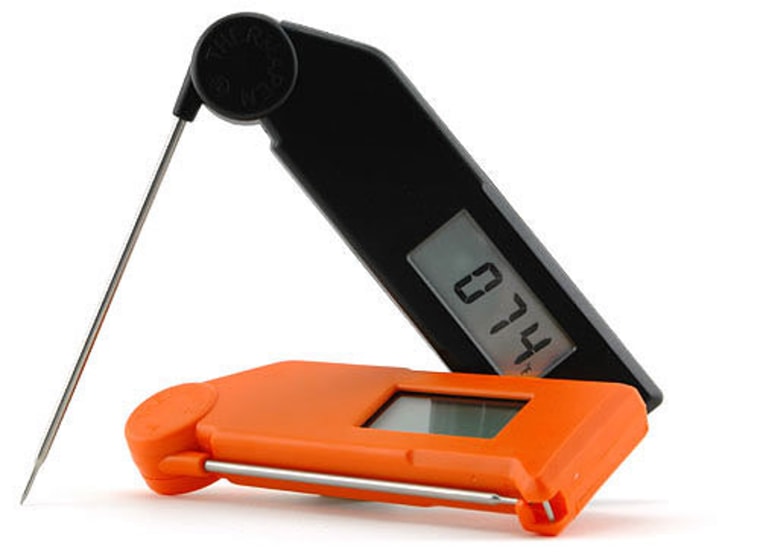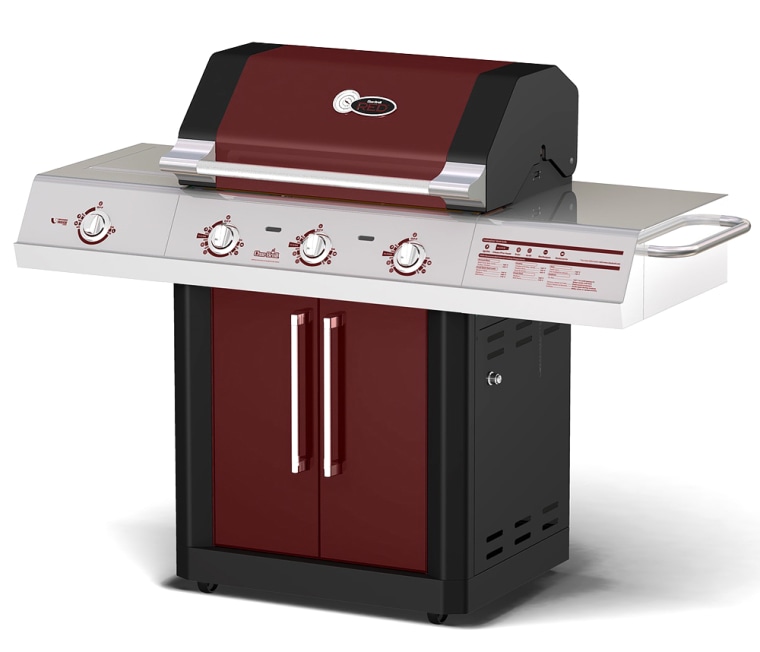As the nation hunkers down into backyard parties and along beaches and parks to watch the fireworks this weekend, some grand old American traditions will also proudly be on display: barbecuing and grilling.
Even these favorite summer activities are taking advantage of technology, although it’s not to everyone’s liking.
“Technology has both helped and hurt barbecue and grilling,” said Robert Fernandez, editor of the BBQ-obsessed blog, Get Your Grill On. He and 17 writers crank out a Fourth of July’s worth of barbecue advice year-round.
“Most of the serious competitive and backyard barbecue folks I know are purists,” he said. “We cook in simple contraptions,” whether it’s a “garbage can,” or a Weber kettle, a water smoker, an offset smoker, “or a custom-made cooker that costs thousands of dollars.
“Now in the grilling world, technology has changed everything,” he said. “Gas rules as a simple, quick and easy method to grill. But gas adds no flavor to the food. To me, this technological advance made it easier to cook, but took all the flavor and excitement out of outdoor cooking.”
Char-Broil has come out with its infrared RED grills ($599 and $899 at Home Depot), which uses a U-shaped, infrared emitter that evenly distributes the infrared heat, from top to bottom and side-to-side, eliminating hot or cold sots on the grill.
Char-Broil's Big Easy infrared, oil-less turkey fryer ($150) is “a great innovation in outdoor cooking,” Fernandez said. “No oil, no mess and great fried foods.”
Better gas for grilling
Gas grilling is the biggest dollar category in the grilling industry thanks to our “busy lifestyles.” said Ernie Boys, Weber’s vice-president of product development.
Boys said one direction Weber took was adding chimney starters — cylinders filled with sawdust cubes or pellets that help light the charcoal — to its line of products.
The company also developed a gas ignition system to help light charcoal — one of the biggest challenges of grilling and barbecuing. That little shortcut helps make the cooking process a little easier, while still retaining a purist's intent for taste.
Weber’s searing stations are a more recent development that help meats like steaks cook more quickly, while retaining their juices.
These blue-flame burners can get as hot as 900 degrees. And when the sun sets, LED lighting on some Weber grills help would-be Bobby Flays of the world see the controls better.
One connoisseur's tools
When Fernandez competes in barbecue cook-offs, he has a standard set of tools he uses.
He starts with a charcoal chimney to light his charcoal. “If I'm on a team with a large pit, we'll use a gas-powered weed burner to light the fires, simply because the fires are larger,” he said.
Then come the accessories. He usually has about 10 remote thermometers, which help keep the chef away from the smoke.
Instead of lifting the lid to check the temperature, these devices use probes that are inserted into the meat. The temperatures are then transmitted to a console, usually wirelessly.
They come in handy for Fernandez, especially when’s he at a competition because often he’s cooking four different types of food. Using the remote thermometers lets him monitor the temperature of both the food and the pit.
Fernandez also has the following items on hand: “Metal tongs to turn the food; rubber gloves for turning the food and for prepping food; knives and cutting boards; a fire extinguisher; a spray bottle for seasoning the meat; (a) brush ‘hawg’ for cleaning the cooking grates, a grease bucket and a bucket for ashes; bus containers to move the food; and coolers and ice.”
While he leans toward the purist side, he does see the benefits of technology in some areas.
“Right now I'm partial to my Weber Smokey Mountain — $199 on Amazon. It’s a great, efficient smoker,” he said.
He’s also a fan of “The Big Green Egg,” a ceramic-based smoker that can do anything from grill to smoke, but Fernandez said it costs a small fortune (starting at $499).
I have a friend who bought one and swears by it. I’ve eaten plenty of meals made on it, and I can see why it has a cult-like following.
Wireless remote thermometers
As to those remote thermometers, temperature is very important in the art of barbecue.
“Most meat is cooked on grills … is all overcooked and the reason is because there’s no way of knowing what the temperature should be,” said Howard Miller, president of the National Barbecue Association, comprised of catering companies and restaurants.

“You should not grill meat by how it looks. The only way to know it’s done is by knowing temperature, which varies according to the meat,” he said. “Most people overcook pork something fierce; it’s all dried out. Pork is done and ready to be used at 145 degrees. By the old rules, it was 160 degrees.”
Fernandez uses a few brands of remote thermometers. Taylor makes a good one, he said, that isn't too expensive ($17), and Williams-Sonoma has another one he likes that costs $50. Another popular thermometer is the Thermapen ($95), made by ThermoWorks.
Much of the fun comes from using these tools as you’re socializing and surrounded by (hungry) friends and loved ones outdoors.
“Barbecue is the ultimate comfort food. It’s not normally a solitary pursuit,” said Carolyn Wells, executive director of the Kansas City Barbecue Society, which boasts about 10,000 competitive cook-out chefs, certified judges and cooking enthusiasts worldwide.
“Barbecue is about food, family and friends. It’s a direct backlash to the hustle and bustle of everyday life. It’s an all-American pastime.”
